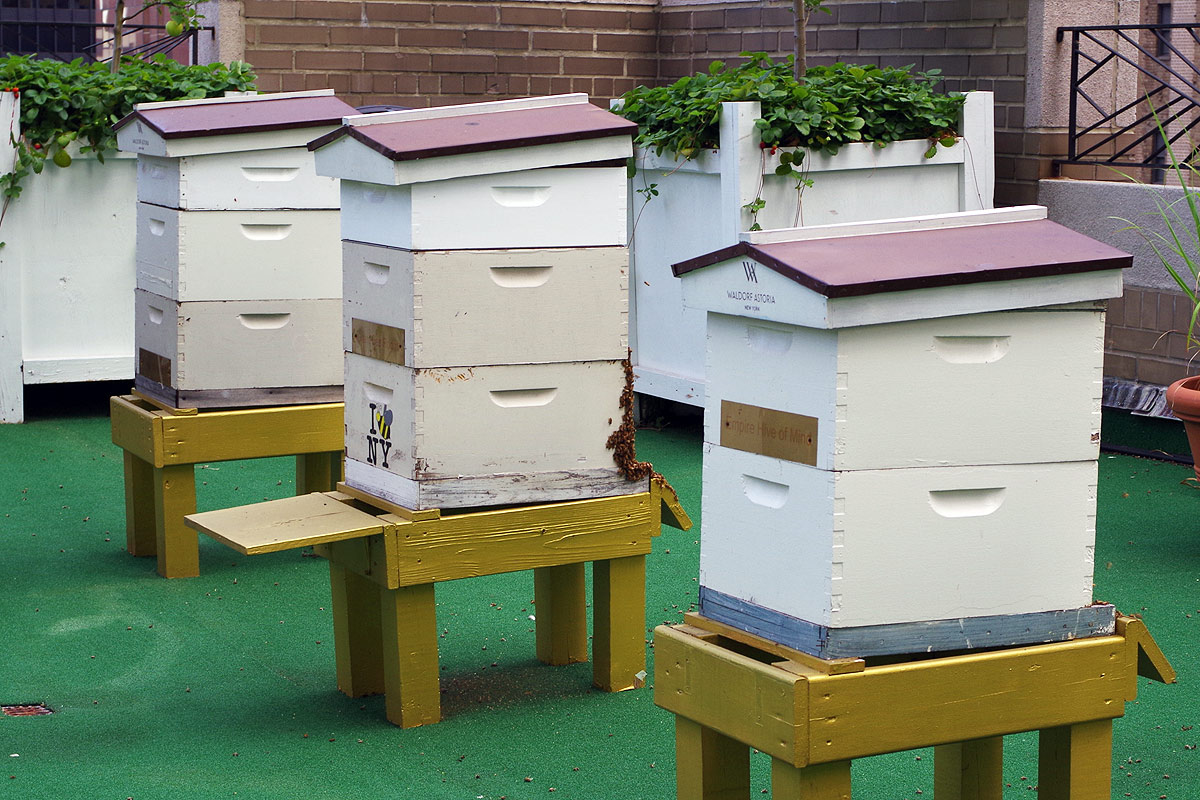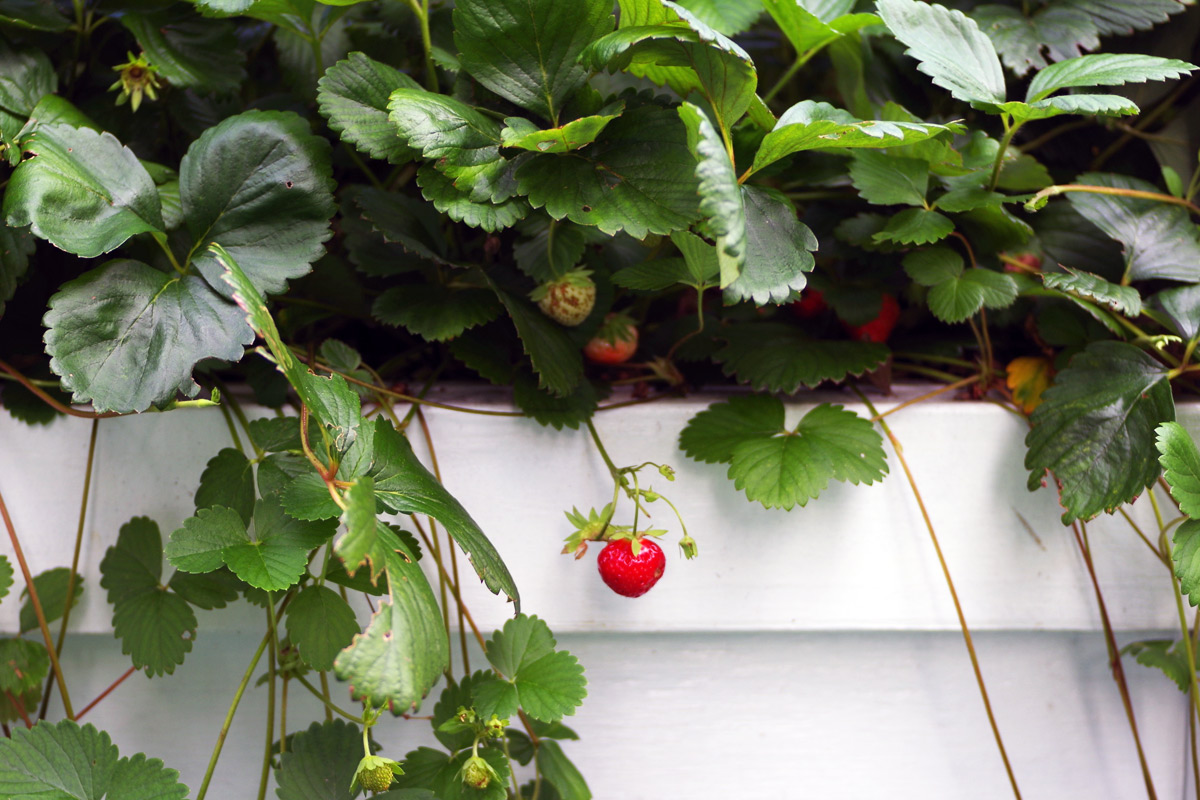Utilizing the 360,000 Bees of the Waldorf Astoria NYC
How the roof garden inhabitants affect the hotel’s daily menu and the local greenery


In 2012, Chef David Garcelon, Director of Culinary for the Waldorf Astoria did the unexpected. He brought European honey bees to a new home: six active hives on the 20th floor roof garden of the acclaimed hotel. Today, approximately 360,000 bees inhabit the space and not only do they produce honey utilized by the hotel, they also pollinate the surrounding NYC gardens within a two-and-a-half mile radius. This stemmed from Garcelon’s desire to provide locally-sourced ingredients to guests and beyond the buzzing headline, the chef continues to reimagine and apply the products of this undertaking. The bees are only one integral part of a lush ecosystem.

We recently had an opportunity to explore the private garden with Garcelon. Just beyond nine raised planting beds, six trees and numerous potted plants the hives thrummed with life. As Garcelon explains, “We are harvesting here up until Thanksgiving but one of the things we try to do is find items we can work with all year. We harvest the honey in the summer, but it lasts through the next harvest.” Over 300 pounds of honey are taken in each year, though plenty is left for the bees to feast on during the winter months. Beyond the sweet syrup, during the growing season, Garcelon goes to the roof every morning (and oftentimes pays numerous other daily visits) to select items for the day’s dishes.

“We work with the Horticultural Society of New York,” he continues, referencing the organization that helped establish the roof garden. But as for what they plant, he shares, “We kind of canvas all the cooks and the chefs and say: what would you like to grow?” Many of the items stay the same yearly, but this year was the first to feature garlic and peppers. They also planted their own varietal of tomato—which they are hoping will be named the Waldorf Tomato. The honey, fruit and vegetable yield isn’t enough for a permanent menu item, but all of them manifest in specials and beyond—including cocktails.

As for his continued motivation and inspiration, Garcelon shares an anecdote: “We have a great archivist here. The original hotel, as you may know, was where the Empire State Building was, but it was torn down in the 1920s. Just after we put this garden in, we were all proud of ourselves and the fact that we reclaimed this space that had sat empty. Soon after, we saw this picture from the garden on the roof of the original Waldorf. The photo was from 1893. It was spectacular. There were gazebos and exotic trees and in the winter they flooded it for ice-skating. We are actually trying to get back to that.” The bees are a remarkable, integral part of this development—and having tried it ourselves, we can offer assurances that their honey is superb.
Many rooftop ingredients, including honey from the bees are available within dishes at the Waldorf’s iconic Sunday brunch, which runs from 10AM until a last seating at 2PM each weekend.
Images by David Graver












